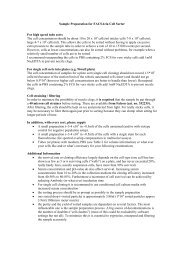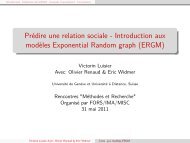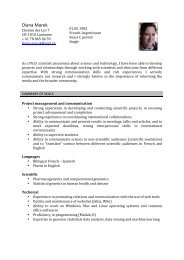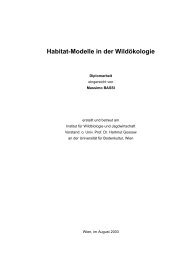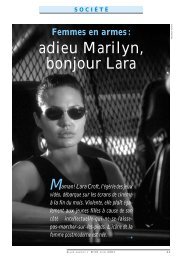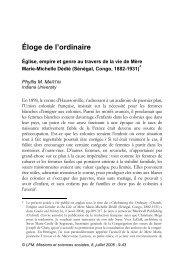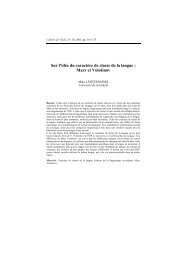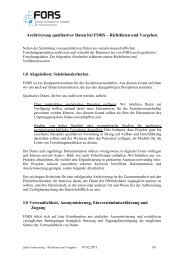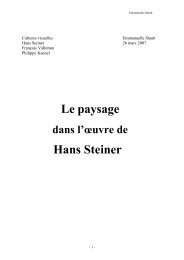conference programme book - European Survey Research ...
conference programme book - European Survey Research ...
conference programme book - European Survey Research ...
Create successful ePaper yourself
Turn your PDF publications into a flip-book with our unique Google optimized e-Paper software.
108 WEDNESDAY 20 JULYCoordinated by:• Gabriele Durrant - University of Southampton, United Kingdom• Ian Brunton-Smith - University of Surrey, United Kingdom2.42.1 Using paradata to explain the interviewer contribuon to survey design effectG. Turner 11 University of Southampton, United KingdomThe interviewer is a well recognized source of survey error. In this paper I focus on the interviewer contribuonto measurement error and, more precisely, on the variability of survey esmates that is introduced by the interviewer– the interviewer effect. Face-to-face interview surveys generally employ a clustered sample design,in which geographical clusters are first selected and then individuals or households are selected within clusters. This design can lead to inflaon of the variance of survey esmates, relave to a simple random sample, dueto the greater similarity between respondents in the same cluster than is evident in the populaon as a whole.This phenomenon is referred to as the design effect. Because, usually, there is only one interviewer workingin each geographical cluster it is difficult to separate the design effect due to areas from that which is causedby interviewers...2.42.2 Is success on the doorstep correlated with the magnitude of interviewer variance?I. Brunton-Smith 1 , P. Sturgis 21 University of Surrey, United Kingdom; 2 University of Southampton, United KingdomEvidence is now beginning to accumulate which shows that interviewer atudes, personality, and behaviourare predicve of success in achieving contact and cooperaon on the doorstep. A less frequently acknowledgedpossibility, however, is that these same characteriscs might also be predicve of the extent to whichinterviewers follow best pracce in the implementaon of standardized interviewing. That is to say, there maybe a correlaon between interviewer-induced nonresponse bias and measurement error. This raises the intriguingpossibility that, although recruing certain types of interviewers and training them to adopt parcularstrategies on the doorstep might serve to reduce nonresponse bias through raising response rates, total surveyerror might be unaffected (or even increased) due to an increase in interviewer variance...2.42.3 Movated underreporng in screening interviewsF. Kreuter 2 , S. Eckman 1 , R. Tourangeau 21 Instute for Employment <strong>Research</strong>, Germany; 2 University of Maryland, United StatesMany naonal surveys include screening interviews intended to idenfy members of the eligible populaonor members of rare subgroups slated for oversampling. Underreporng of members of these groups drives upsurvey costs and may introduce bias into the esmates. There is evidence that members of the target populaonsare somemes underreported in screening interviews. Interesngly members of these same groupsare oen well covered in surveys that do not parcularly screen for them. One of the best documented instancesof such a screening shorall occurred in the Naonal Longitudinal <strong>Survey</strong> of Youth, 1997 Cohort, witha coverage rao of only about 70 percent of the targeted age group. All other age groups have rates above 90percent. Such screening shoralls could reflect respondent movaon to screen out rather than refuse (andbe subject to conversion aempts)...2.42.4 Measuring Interviewer Effects across Countries and <strong>Survey</strong>sA. Blom 11 Survex - <strong>Survey</strong> Methods Consulng, Germany



